I spent last Sunday afternoon exploring Chislehurst caves and it was far more goth than I expected.
I’ve been on a few spelunking adventures recently, inspired by the last few months spent lurking around #CaveTwitter. As such, this post is something of a #CaveTwitter tribute – probably the first of many. I have so many thoughts circling since this trip underground but there’s not enough space to get them all down here. Think of this as a prologue…
The Chislehurst Caves are located at the centre of an exceptionally wealthy London suburb. To find the place you must make your way through the kind of winding, bloated neighbourhoods that have you masochistically checking house prices on your phone every few hundred metres. There is an unimaginable amount of money here, making Chislehurst a surprising location for a hollowed-out subterranean city. Below the excess of the living, there is another world – a vast underground cave system inverting the grandeur above with its silence and darkness.
It also has a gift shop, but when it sells merchandise like this poster for £1.50, that is not something to gripe about.
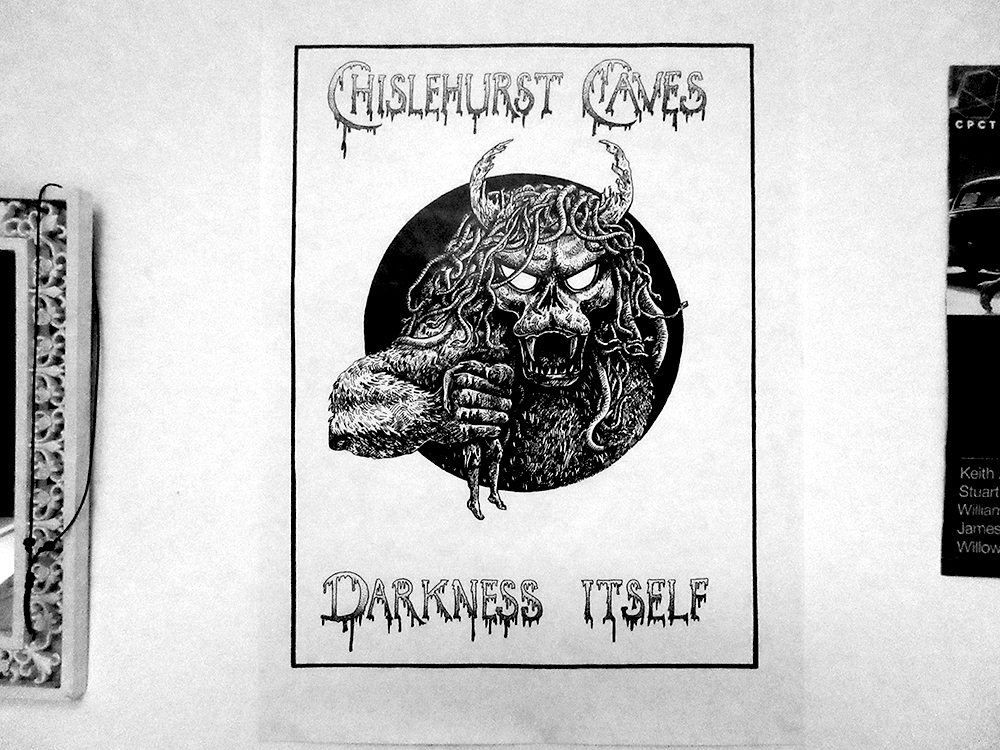
After waiting around in said gift shop, a group of us were soon summoned to the cave entrance. Health and safety warnings were repeatedly broadcast, albeit with an open resentment, as we made our way down an uneven but steady slope into the vast cave system with our tour guide. With the majority of the caves being unlit, we were handed one paraffin lantern to every four people as our only source of light. Modern torches were prohibited as their glare bouncing off the white chalk would apparently hurt the eyes. Camera flashes were prohibited too for the same reason. Opting to be courteous, the clearest pictures featured here were taken having diverged from the prescribed path. You don’t have to stray far from the guided tour to find yourself in the most oppressive darkness – a claustrophobic darkness that seems to have a distinct weight to it, carrying any and all sounds for miles; a darkness that grabs you and soon has you running back towards the flickering glow of your paraffin procession.
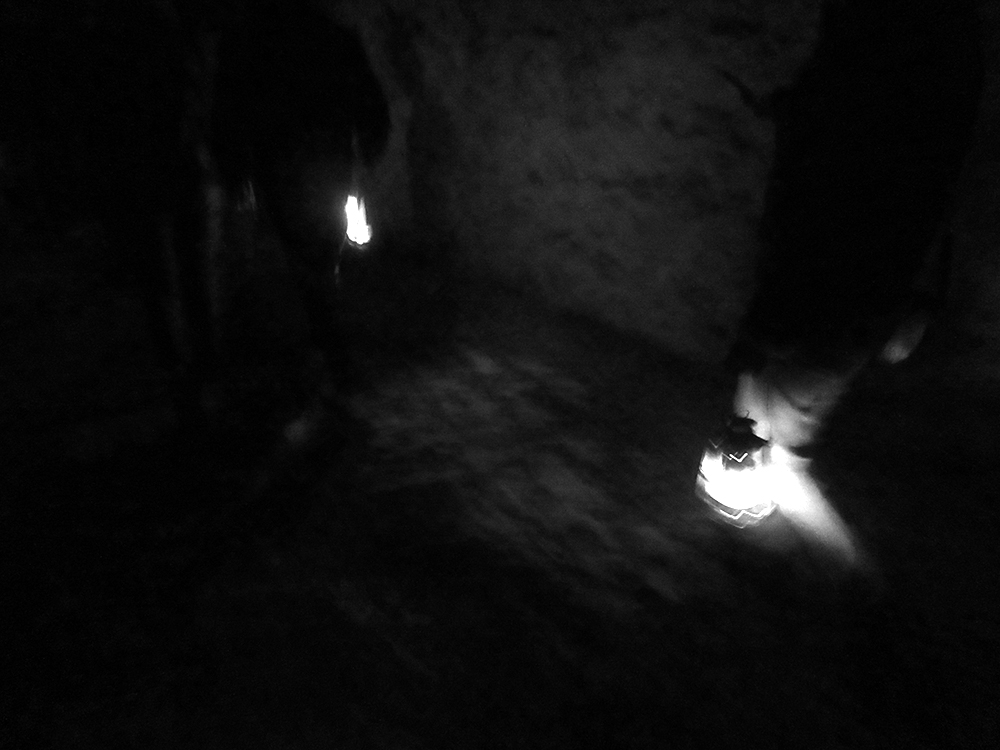

This noumenal narrative is well suited to Halloween but I can’t say if our October tour was different to any other time of year. Around every corner there is a different story to be told – of pagan ritual, paranormal activity and wartime troglodytes.
It had me thinking, in the darkness, about English caves and their mythologies. Where philosophy is concerned, it is Plato’s cave that is most readily referenced. Amongst the #CaveTwitter crowd, it is perhaps Bataille’s caves at Lascaux that first roll off the tongue, alongside DeleuzoGuattarian strata and the theory-fictioning of Professor Challenger, the man who made the Earth scream. With a rich subterranean history, what do we have in the UK to match these Greek and French caves of wonder? Whilst Challenger is a product of these isles, are we perhaps otherwise too culturally accustomed to the life of the troglodyte to give these spaces over to the unknown and use them to populate our modern philosophies? Ballard’s The Crystal World comes to mind although, down here in Chislehurst amongst the chalk, there are no crystals to behold. Shiny black flecks of flint catch the eye as the orange lamplight bathes the walls and then, when the lights are out, there is only darkness.
I have intrusive thoughts of our memorials to the dead, buried but not by choice, scattered around our landscapes. Hundreds have been lost to the coal face and the fraught politics that once surrounded the mining industry in this country can still be felt in some regions, although politics in recent years seems to suggest that even these resentments have been lost to faded memory. Coalworker’s pneumoconiosis took many more quietly in the decades after the all too visible social traumas of mining’s Thatcherite dismantlement. The disasters that remain most vividly in the mind are those which saw the subterranean horrors violently brought above ground – the Aberfan disaster no doubt being the most horrific spectacle in living memory.
And yet here, at Chislehurst, these caves are both a place of refuge as well as a place to be feared. As we walk the chalked halls, I am reminded of Big Pit, a monument of pride to Welsh industry which nevertheless has a similarly oppressive and eerie atmosphere on its quieter days – like an American frontier ghost town from the dust bowl transplanted to the Welsh hills, forever haunted by lingering mists. In Yorkshire, also known for its once-thriving mining industry, the most famous troglodyte is perhaps Mother Shipton, the 19th century prophetess, predicting the world’s end from deep within it.
Xenogoth spent time potholing in the Lake District, along the River Ribble, as a teenager and in recent years I have visited Peak Cavern in Castleton dozens of times. I’m realising I am a more seasoned spelunker than I first thought. Also known as the Devil’s Arse, the remnants of Peak Cavern’s troglodyte community are not yet ancient enough to become the stuff of half-remembered weird tales. Some of the surrounding mines, for precious stones in particular, are still somewhat operational but the educational focus on geology is too illuminating to invoke fears of darkness itself.
Chislehurst Caves, however, caught me off guard. These caves were unlike any tourist attraction I had previously visited, lending themselves to abstract horror with their strange entanglement of factual history and mythology that do well to shift the caves out of time.
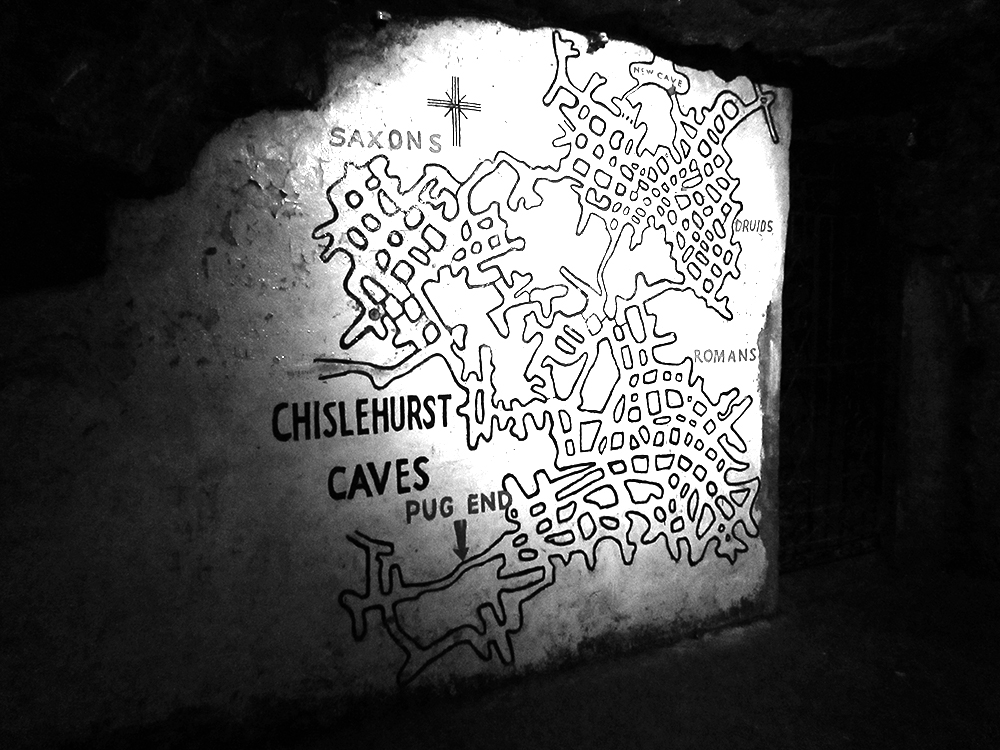
The caves are split into three sections, each named after the community that supposedly dug out each one – Druids, Saxons and Romans. The Druid section is the oldest, apparently dug out 2000 years ago, followed by the Saxons and then the Romans. Archaeological evidence for these dates seems lacking and a quick Google search is all it takes to find theories to the contrary, some suggesting no section is more than 300 years old whilst others proclaim the caves were mined only as far back as the 1300s. This uncertainty is powerful. Time feels different here. It is implected.
This temporal disorientation is immediate as you wander through the youngest section of mines first. Supposedly dug out by the Romans, the area is now home to various large-scale dioramas showing the caves’ more recent uses as a First World War munitions store, a Second World War air raid shelter and a 1960s music club.
The caves were once frequented by some of the biggest musical names of the 1950s and ’60s. Events were originally organised by the South London Jazz Club, led by Lonnie Donegan and Acker Bilk, who made the caves their home and invited the biggest jazz and skiffle groups of the day to join them underground. Then, because of a later connection to Radio Caroline, the caves saw the likes of Jimi Hendrix, Pink Floyd, Led Zeppelin, Black Sabbath, the Rolling Stones, and (most fittingly) the Troggs play underground. The sound must have been immense. Whether these names truly played here is now unknown to me but the unbelief seeded in my mind and the surrounding atmosphere is palpable. I feel like I am walking through a museum and a guide is telling me that every artefact was discovered in place, always already here. Unbelievable, but then, what if?
Our guide jokes that the younger members of our group will have heard of very few of these names, and the oldest will be too embarrassed to admit to knowing others. He asks a young girl nearby: “Have you heard of Justin Bieber?”
“Yes,” she replies, shyly.
“He’s not played here. In fact, we wouldn’t let him in… Or better yet, we wouldn’t let him out…”
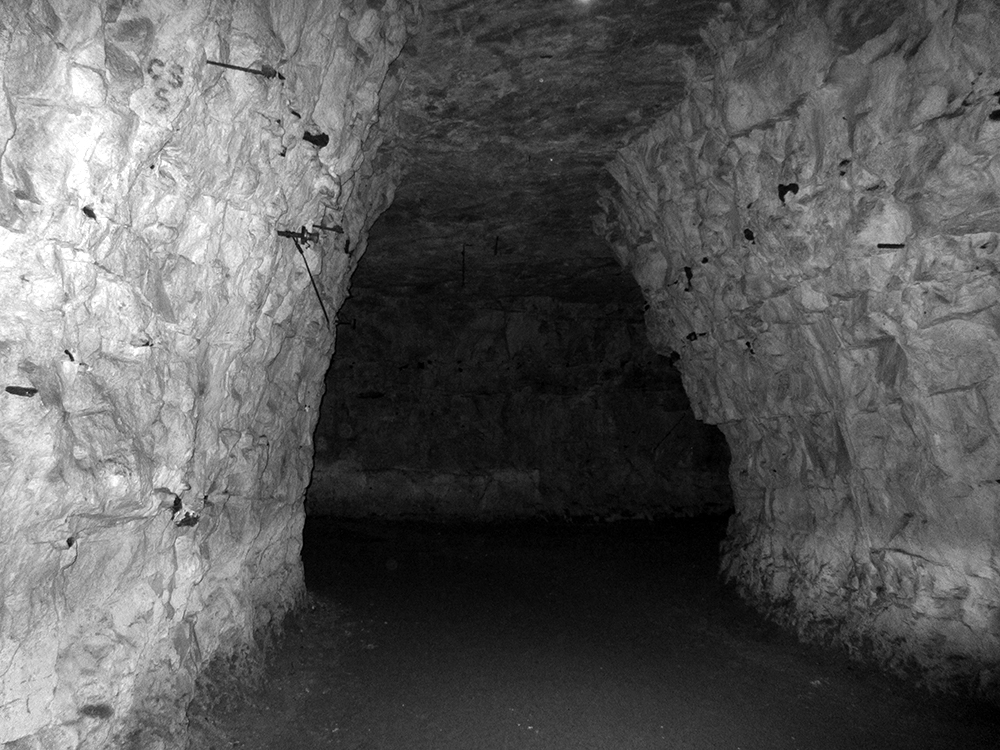
Around a few more chalk corners, we come to a church. The caves made for a perfect ready-made air raid shelter which became home to some 15,000 people during the Second World War. Whether the local community was especially pious or the Blitz brought out everyone’s God-fearing nature, one cove was consecrated by the Bishop of Rochester. Sunday services were held and one child – the only child to have been born in the caves – was christened here. Having never been deconsecrated, you could still perform official and lawful ceremonies here if you so wished, although it doesn’t seem like a very popular location for destination weddings.

As we continue through the tunnels, we see letters and numbers still legible, daubed high up on the walls. Not unlike post codes, these letters and numbers were addresses for the thousands of wartime cave dwellers. Families were assigned bunks and, alongside the church, there were also toilets, a hospital and even an office for the citizens advice bureau.
Alongside these strange markers of normality, the most unnerving features of this section are the wall carvings made by the wartime inhabitants. Many are said to have been done by service men during the First World War, wiling away the hours in the munitions store. The walls are pocked with distorted faces, barely recognisable apart from the recurring motifs of an oval shape and a crumbling eye socket or two.
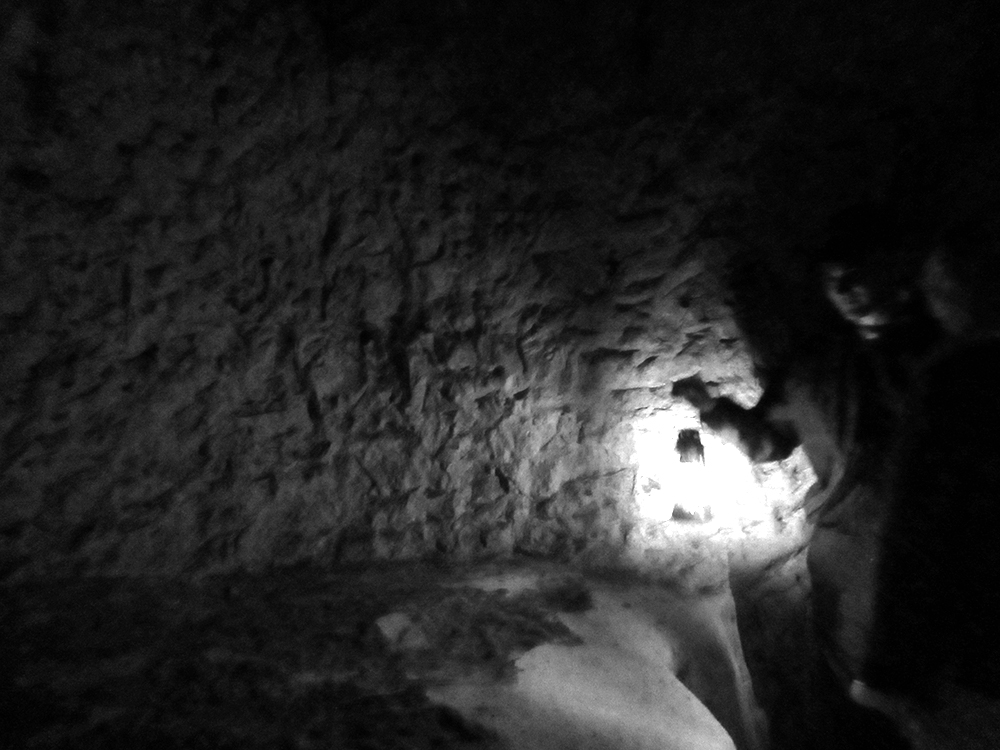
Moving through to Druids – the oldest section of the labyrinth – our guide points out an altar he says was likely used to sacrifice children in the hope of bringing a good harvest before beginning a demonstration of the cave system’s acoustics.
In the next alcove there is a large metal plate, resembling the remains of some sort of bulletin board, its battered texture unnerving as its surface seems to bare signs of bruising and biological decay in the low light. At first, after the usual banter and lighthearted attempts to unnerve the children, our guide lightly taps the sheet with a mallet. A thunderous rumble permeates the walls all around us. It reverberates throughout the system in such a way that, even though the source of the sound is visible to us, you doubt what you have seen. The sound could be coming from anywhere.
He proceeds to play the entire cave system at once, hitting the metal as hard as he can. The sound is deafening but, like sonar, it maps out the caves – at first with lucidity, before the fading sound unravels in the mind.
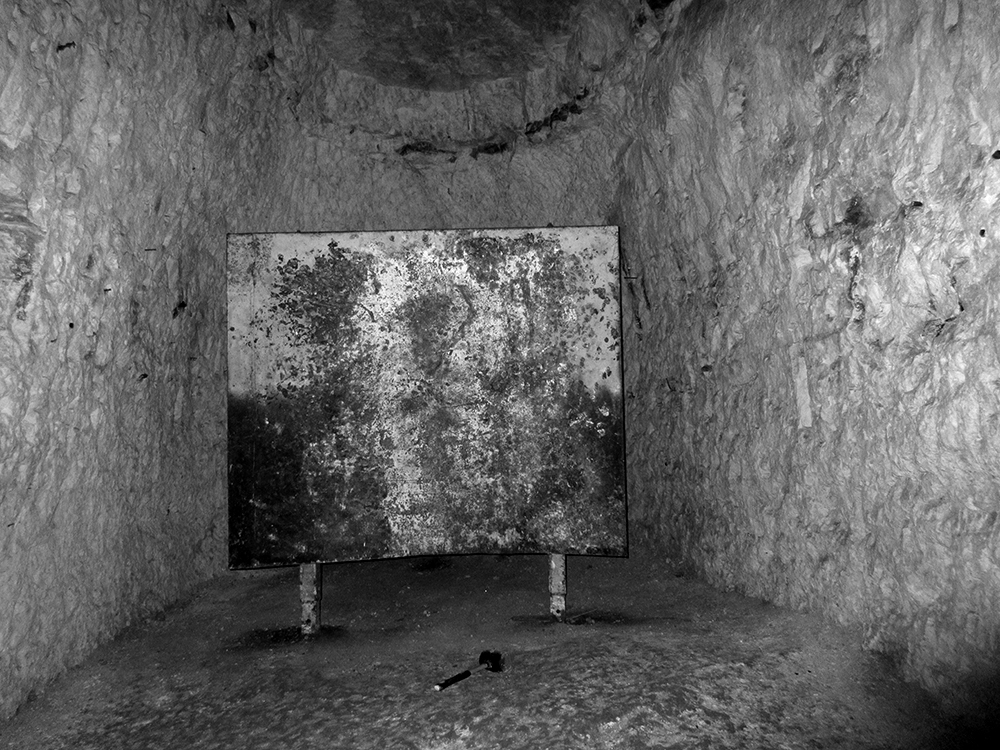
We continue on, once again, winding our way through the system, by now having lost all sense of direction, until we reach a pool of water. Imaginatively called the Haunted Pool, it is the strangest sight we have so far come across, in the middle of a cave system that has, until now, been completely dry.
The story goes, we are told, that prior to being filled in during the war, this pool was a well that went down over 30 metres. A man drowned his wife in this well and there have been reports of strange goings-on around the spot ever since. As a challenge to those who thought themselves brave enough amongst the local community, the cave guides devised a challenge – after closing time, a guide will walk you to the pool, sprinkling a trail of flour back to the entrance, before leaving you there with some candles and your imagination. If you can last the night, you win your pride. Only one man was ever successful – a local policeman who distracted himself by carving a horse into the chalk. It was nevertheless, he said, the most terrifying experience of his life and whilst his work on the horse may have kept him somewhat distracted, he was, before being escorted back the next morning, too scared to turn around away from the wall.

The final attempt at the challenge took place on Halloween night in 1985 and there is a wall carving commemorating the occasion. Two cave guides decided to have a go at the challenge for themselves. In keeping with the rules, they were positioned at opposite ends of the tunnel adjacent to the Haunted Pool. They were not allowed candles and they were not allowed to speak to one another. They were, for all intents and purposes, “alone”, as their own rules dictated.
Halfway through the night, one of the men let out a scream. Running to check on him, his colleague found him unconscious and injured. An ambulance was called and their attempt was over. The unconscious man had no memory of what had happened to him or how he had obtained his injury – a dislocated shoulder. Unfortunately, due to his injury, the challenge was no longer allowed to continue.
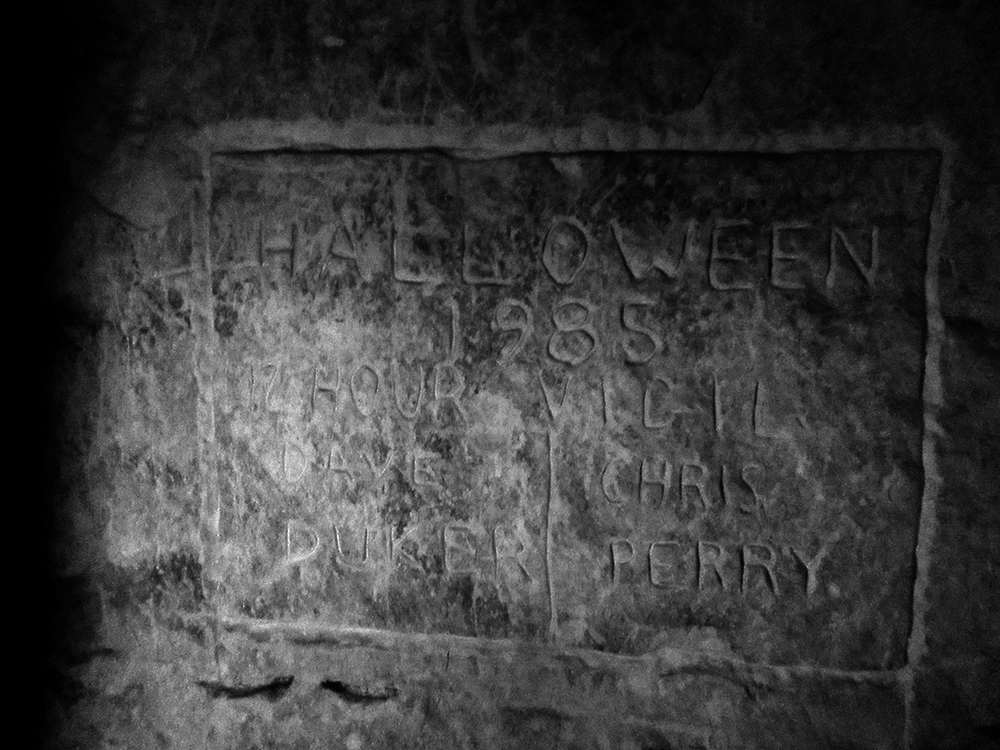
Continuing through Saxons, our guide returned us to the narrow slope at which we had started. We had walked for one mile, taking the quickest route deep into the caves and back out again. Our disorientation was not abated by our return. We had no sense of the distance traversed, no sense of the time passed.
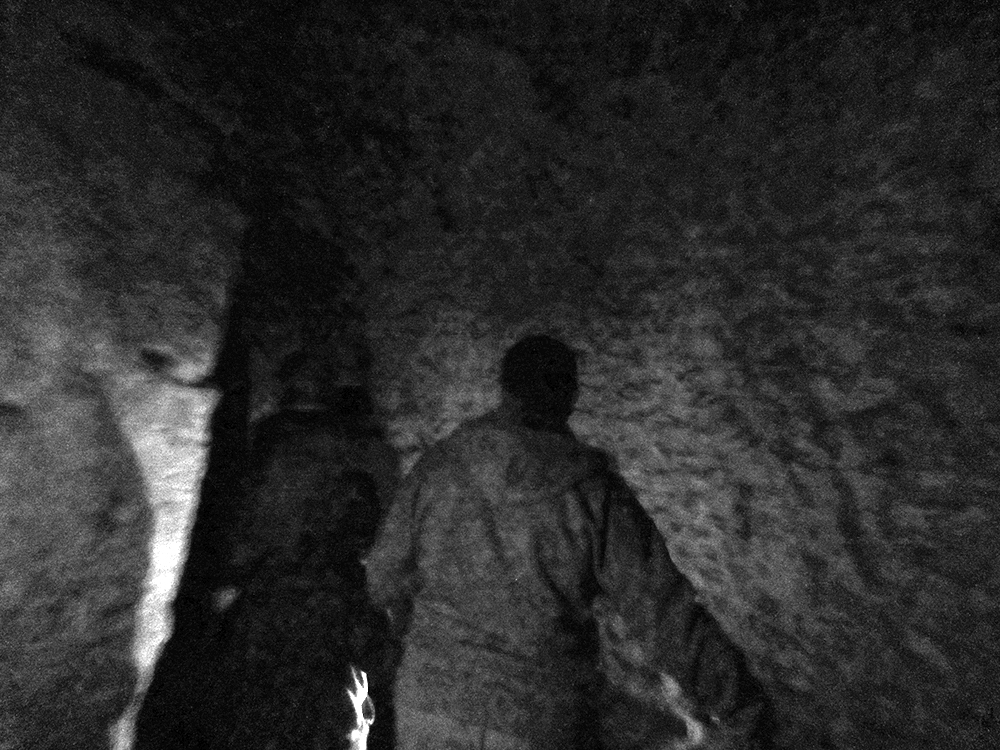
Back at home I read Maurice Blanchot’s essay on the birth of art and his friend Bataille’s book on the cave paintings at Lascaux. He describes a painting which, in one corner, is marked with the outline of a man:
Is he dead? Is he asleep? Is he feigning a magical immobility? Will he come to, come back to life? This sketch has challenged the science and ingenuity of specialists. It is striking that with the figuration of man, an enigmatic element enters this work, a work otherwise without secret; a scene also enters into it as a narrative, an impure historical dramatization. Yet it seems to me that the meaning of this obscure painting is nonetheless clear: it is the first signature of the first painting, the mark left modestly in a corner, the furtive, fearful, indelible trace of man who is for the first time born of his work, but who also feels seriously threatened by this work and perhaps already struck with death. [1]
I think of the disintegrating chalk faces, the horse drawn in terror, the post codes marking safe haven from bombs above, the carved plaque commemorating failure and injury. What is it to feel threatened by caves, by their outside, and to mark their walls? Has art always been expression and distraction? A way both in and out of the mind? When exit is not an option, does the mind always turn to the wall?…
Down there, all I know with certainty is that there is nothing so inescapable as darkness itself.
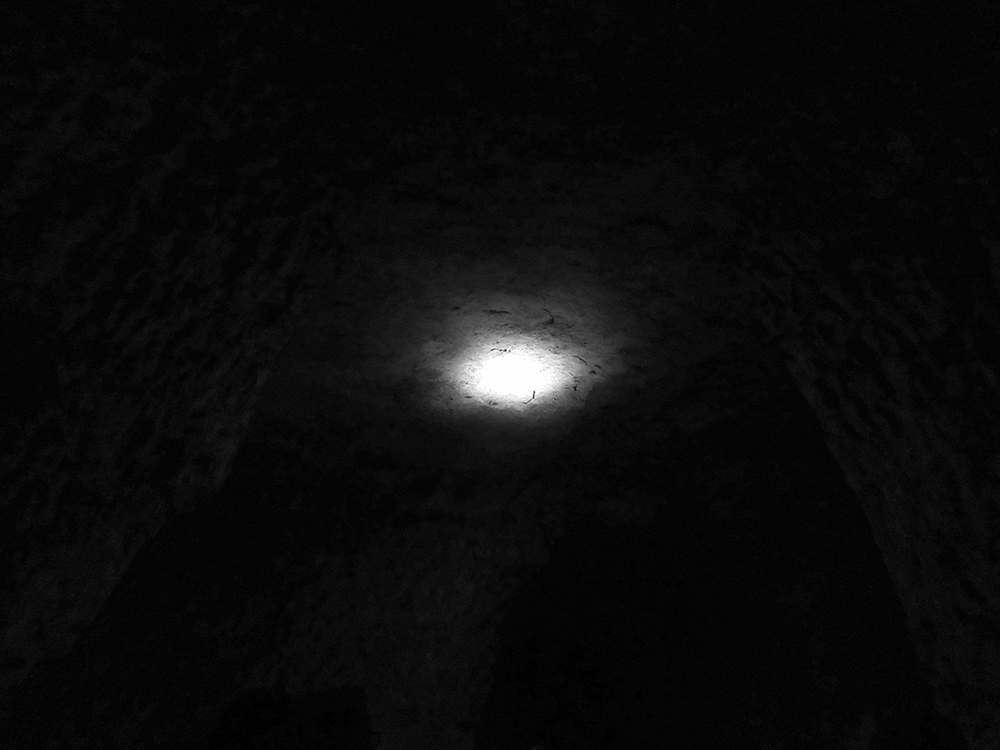

xoxo, gothic girl
[1] Maurice Blanchot. “The Birth of Art” in Friendship, trans. Elizabeth Rottenberg. (Stanford: Stanford University Press, 1997), pg. 11


9 Comments